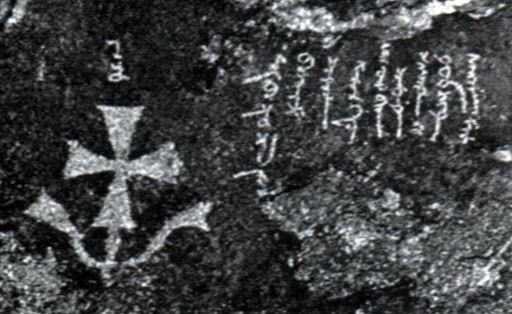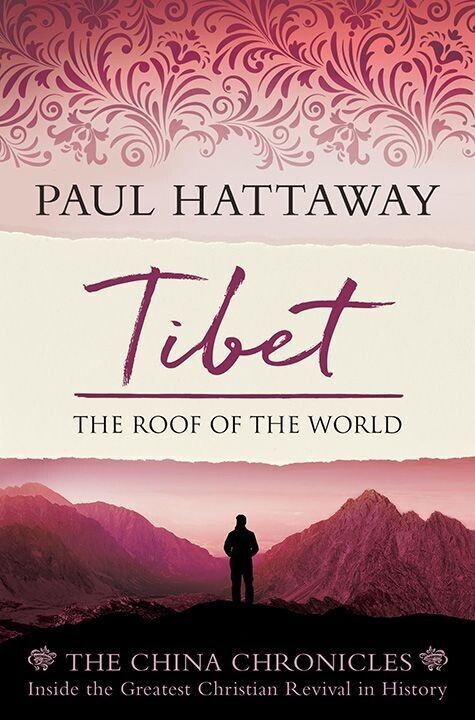Nestorians in Tibet
For centuries Xining City, the capital of Qinghai Province, was considered one of the last outposts of Chinese civilization, and the start of the Tibetan empire. The Nestorians, who first established themselves in China in AD 635, were probably the first Christians to witness in Tibet. Evidence has been discovered that shows Nestorian influence in northern Gansu Province, and in a string of towns further to the north in neighboring Xinjiang. It is likely that members of the Nestorian Church (also known as the Church of the East) traveled to Qinghai and were the first to spread the gospel of Jesus Christ in Tibetan areas.
The arrival of Nestorians occurred when the Tibetan empire was at its broadest extent, and when cities like Hotan, which is now a Muslim area in Xinjiang, were under Tibetan control. Although there are few or no Tibetans in Hotan today, it was in this area that Nestorian influence was most strongly felt.
Scholar Martin Palmer, who has studied the spread and influence of Nestorian Christianity, places its arrival among the Tibetans even earlier. He has said:
"It is unclear exactly when Christianity reached Tibet, but it seems likely that it had arrived there by the sixth century.... It seems likely that Christians first entered the Tibetan world around 549 AD, the time of a remarkable conversion to Christianity of the White Huns [a nomadic tribe of Central Asia].... A strong Church existed in Tibet by the eighth century. Patriarch Timothy, head of the Church of the East from 778 to 820, wrote from Baghdad in c. 794 of the need to appoint another bishop for the Tibetans, and in an earlier letter of 782 he mentions the Tibetans as one of the significant Christian communities of the Church. The Church's bishopric is assumed to have been in Lhasa, where it is likely to have been active as late as the 13th century, prior to the popular extension of Buddhism."
Another researcher on the Nestorian enterprise has stated:
"In a letter to Rabban Sergius, Timothy writes that in his time many monks crossed the sea and went only with staff and scrip to the Indians and the Chinese.... Thomas of Marga tells how this indefatigable patriarch selected more than 80 monks, some of whom he ordained bishops and sent forth to preach the gospel to the heathen in the Far East. Others, we are told, preached in the countries of...savage races and planted in them the light of the truth of the gospel. They evangelized and baptized many, worked miracles, and showed signs, and the fame of their exploits reached the furthest parts of the east."
The Crosses of Tibet

For many centuries, the Buddhist kingdom of Ladakh, in what is now northern India, was considered part of Tibet. Occasionally, this barren part of the world yields clues about its past Christian influence, such as in 1906, when three Nestorian crosses were discovered carved into a huge boulder at a remote village located directly on today's border between India and China.
The boulder dominates the entrance to the Drangtse Pass, one of the main routes between Lhasa and Bactria, an ancient kingdom that was ruled by the descendants of Greeks who settled in the area following the conquest of Alexander the Great in the fourth century BC. Martin Palmer has noted:
"The crosses are clearly of the Church of the East, and one of the words, written in Songdian, appears to be 'Jesus.' Another inscription reads, 'Nosfarn came from Samarkand as emissary to the Khan of Tibet'.... The crosses bear testimony to the power and influence of Christianity in that area. Christianity was sufficiently accepted in the region to warrant carving the Christian symbol to protect travelers."
© This article is an extract from Paul Hattaway's book ‘Tibet: The Roof of the World’. You can order this or any of The China Chronicles books and e-books from our online bookstore.
1. Martin Palmer, The Jesus Sutras: Rediscovering the Lost Scrolls of Taoist Christianity (New York: Ballantine, 2001), pp. 113-14.
2. John Stewart, Nestorian Missionary Enterprise: The Story of a Church on Fire (Edinburgh: T. & T. Clark, 1928), p. 83.
3. Palmer, The Jesus Sutras, p. 114.





